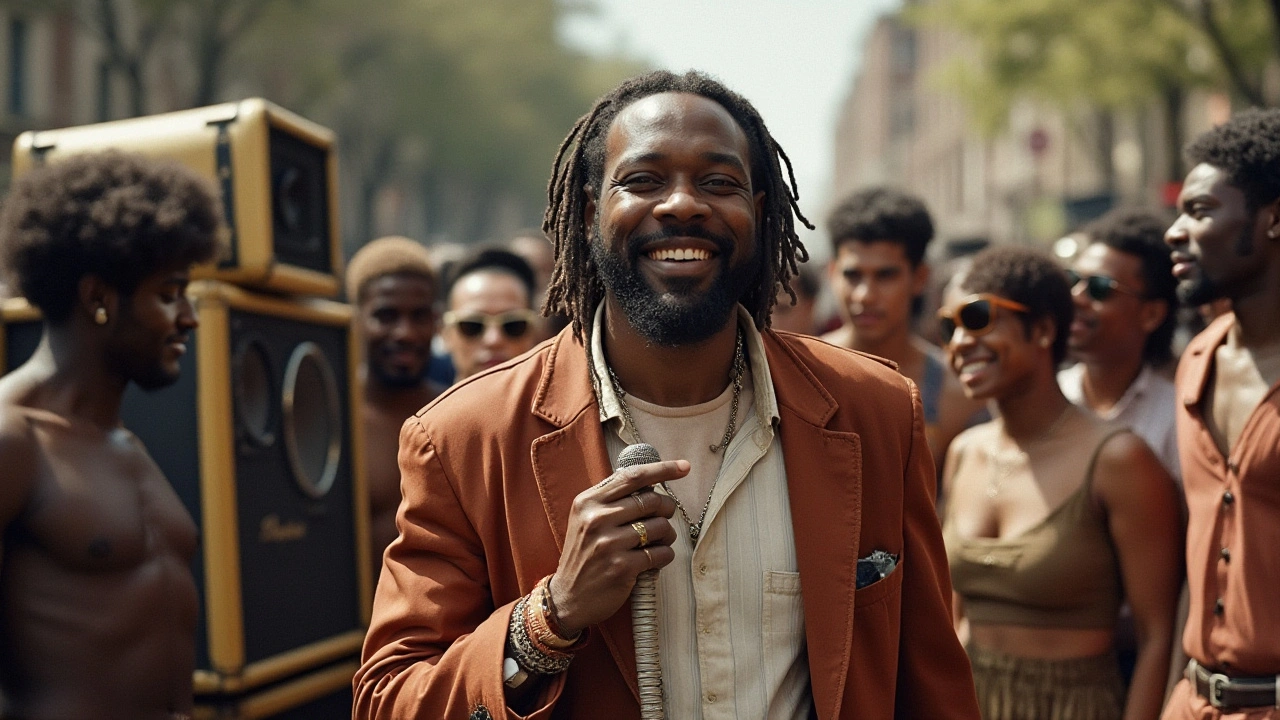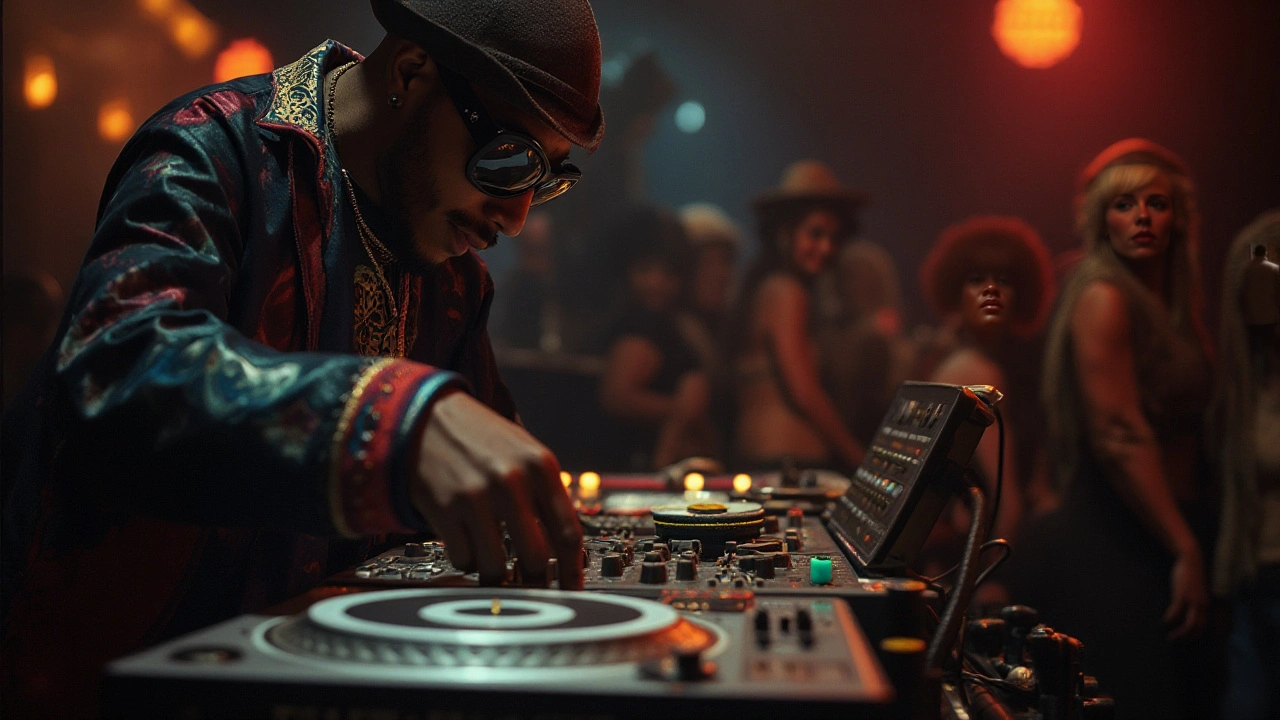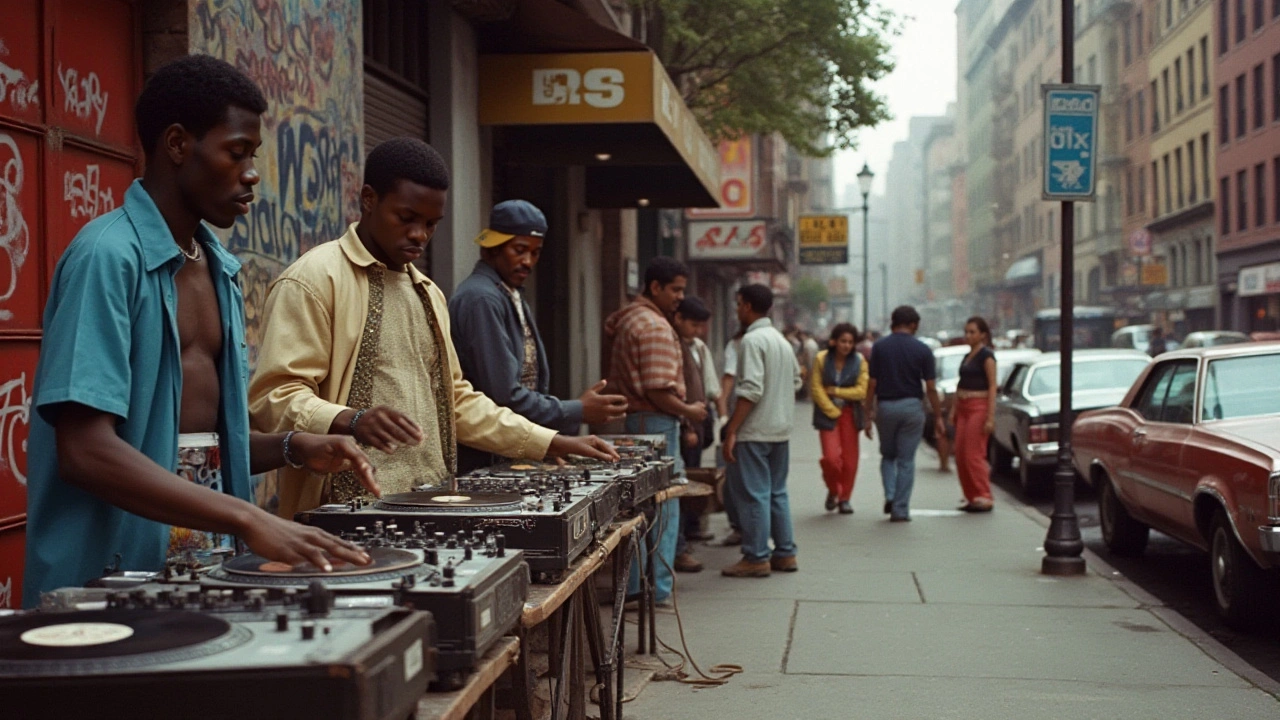The ground beneath our feet continues to shake with the reverberations of a cultural revolution that began in the bustling streets of New York City during the late 1970s. Hip hop, a genre that has broken linguistic, racial, and cultural barriers, was born amidst the urban energy and raw creativity of young innovators drawn together by a common pulse. These pioneers didn't just create music; they forged a way of life that resonated globally.
In this article, we pay homage to the audacious trailblazers of hip hop who, against the backdrop of social challenges, used rhythm and poetry to express the inexpressible. Figures like DJ Kool Herc, Grandmaster Flash, and Afrika Bambaataa are synonymous with the movement's birth, each contributing unique innovations and styles that continue to inspire new generations. As we unravel their stories, we also reflect on how these early influences have crafted a genre that embodies resilience, ingenuity, and unyielding spirit.
- Origins of Hip Hop Culture
- The Streets of NYC: A Hotbed of Talent
- Trailblazing Figures in Early Hip Hop
- Innovations that Changed the Game
- The Enduring Legacy of the Pioneers
Origins of Hip Hop Culture
In the vibrant tapestry of New York City during the 1970s, a new form of cultural expression began to unfold in neighborhoods where creativity was not just a pastime but a necessity. The hip hop history traces its roots to the Bronx, a borough rife with socio-economic challenges that ironically set the perfect stage for a creative outburst. It was here, amidst high-rise graffiti-laden buildings and echoing sidewalks, that the beats of hip hop found their first rhythm. The urban environment, marked by its intense vibrancy and challenges, provided a fertile ground where various elements converged to birth this multifaceted culture.
The true heart of hip hop culture lay in its community gatherings—block parties—where DJ Kool Herc, also known as the father of hip hop, introduced a revolutionary way of using turntables. His technique of isolating the 'break' of a record and repeating it sparked what would become known as breakdancing. This innovation wasn’t just a novelty; it was a means of communication and competition, where young people could express dissent and creativity packed in sharp, dynamic moves.
As hip hop grew, it amalgamated the influences of African drum beats with the rhythmic spoken word known as rapping. Drawing from roots that echoed the call-and-response chants of African traditions, its artists communicated tales of real-life struggles and triumphs. An essential aspect of its origin was its equitable platform; anyone with a voice and a story could participate. The discovery of varied linguistic expressions in rap represented the diverse experiences of marginalized communities, displaying a rawness and authenticity unparalleled in other music genres.
"Hip hop simply meant the unheard could finally have a voice," journalist Tricia Rose remarked, capturing the essence of a movement that resonated deeply with the disenfranchised.
Another cornerstone of hip hop culture was graffiti art, a visual explosion often seen decorating the walls and train compartments of NYC. Each piece was not just an image; it was a narrative, an indelible mark of the artist's presence and message. Alongside it, the curation of fashion trends—such as baggy jeans, oversized jackets, and signature sneakers—gave rise to a distinctive style that became emblematic of the culture itself.
By the late 1970s, hip hop was no longer confined to street corners or block parties. It had started to infiltrate the underground club scene and, soon after, the music industry. The spark ignited by these early pioneers created a wildfire that spread far beyond New York, touching every corner of the globe. With each era, hip hop's transformative power and its celebration of life against adversity became more pronounced, leaving an indelible mark on modern musical and cultural landscapes worldwide.
The Streets of NYC: A Hotbed of Talent
New York City in the 1970s was a melting pot of cultures, vibrant and teeming with the energy of transformation. This was a period marked by incredible social upheaval and creativity, particularly in neighborhoods like the Bronx, where economic challenges were met with resilient spirits. Amidst the concrete playgrounds and high-rise apartments, a unique sound began to emerge. Young artists sought an outlet for their talents and frustrations, turning street corners and parks into makeshift stages—a place where the hum of city life merged with the pounding rhythms of a new sound. Hip hop, with its explosive beats and rhymes, was more than just music; it was the voice of a generation poised for change.
The streets themselves became vibrant canvases, emblazoned with graffiti that told stories in color and symbol. These artworks, often misunderstood, were expressions of identity and rebellion, closely tied to the burgeoning hip hop culture. Around this time, block parties became the heartbeat of community life, orchestrated by visionary DJs like DJ Kool Herc. Through his innovative use of turntables and mixing, Herc laid down the foundations for what we now recognize as hip hop music. At these gatherings, he employed the breakbeat, a technique that isolated and repeated the musical 'breaks,' fostering a new rhythm that encouraged dancers to come forth, challenging the traditional notions of performance.
An Era of Innovation
This era marked an extraordinary drive among artists to innovate and redefine music. With turntables as their instruments, DJs like Grandmaster Flash pushed the boundaries of what was possible, birthing techniques like cutting and backspinning, which added an electrifying dimension to the music. These innovators didn't seek permission; they took ownership of the sound waves and crafted their own identities. As Afrika Bambaataa emerged on the scene, the cultural movement was given a unifying philosophy through the formation of the Universal Zulu Nation, blending Bronx street styles with African and street knowledge. This was about more than just beats and rhymes; this was establishing a sense of community and a powerful cultural heritage.
The influence of these early pioneers was profound, setting the stage for the global movement of hip hop. Radio DJs and record labels caught onto the growing wave, recognizing the massive appeal and untapped potential that the streets of New York had spawned. They began to amplify these voices beyond the city's limits, turning a once localized phenomenon into a worldwide sensation. Hip hop soon became synonymous with not just the soundscape of the city, but with the hopes, struggles, and dreams that echoed through its high-rises and crowded alleyways. This cultural shift was a testament to the transformative power of talent, storytelling, and innovation born from urban environments.
"The essence of hip hop was the raw creativity and the innovative spirit of the youth from the streets of New York," remarked hip hop historian Jeff Chang. "It wasn't just about music, but the deep-seated narratives each artist carried with their beats."
This vibrant culture would not have been possible without the fertile ground laid down in the labyrinthine streets of New York City. It was here that the seeds were sown, nurtured by a community that thrived on resilience and creativity, proving that ingenuity and art knew no bounds. What's more, a spirit of cooperation, rather than competition, brought individuals together, sharing knowledge and driving one another to new artistic heights. These streets produced the legends who paved the way for an art form that continues to evolve and inspire, forever tied to the bustling city that birthed it.

Trailblazing Figures in Early Hip Hop
In the vibrant melting pot that was New York City during the late 1970s, a new era of hip hop history was about to unfurl. At the forefront of this seismic shift were visionaries who saw beyond existing musical confines, understanding that every beat had a story to tell. The revolutionary force that was DJ Kool Herc—a name revered among hip hop pioneers—marked the genesis of this dynamic movement. His innovative style of mixing at block parties in the Bronx laid the foundational beats that would soon define the genre. By isolating percussion "breaks" and elongating them, he created a pulsating rhythm that became a canvas for creativity.
Grandmaster Flash was another trailblazer, whose technical prowess redefined the scope of DJing. Known for perfecting the techniques of cutting, back-spinning, and phasing, Flash introduced unprecedented methods that expanded the auditory landscape of hip hop. His crew, the Furious Five, produced hard-hitting tracks like "The Message," a song that sharply critiqued urban life, demonstrating rap's potential for social commentary. As reflected in a quote from Flash in an interview with NPR, "Hip hop wasn't just music, it was a cultural exchange and a way to reflect what was actually happening in the communities."
"Hip hop was the conversation that the rest of the world wasn't ready to have." — Grandmaster Flash, NPR
Then there's Afrika Bambaataa, whose influence extended beyond music into the creation of cultural frameworks that defined the genre. As the founder of the Universal Zulu Nation, a group that promoted peace and unity through hip hop, Bambaataa showcased the genre's power to foster community and camaraderie. His Afro-centric beats and ethos gave the birth of hip hop a distinct cultural identity, celebrating heritage and legacy. His pioneering track, "Planet Rock," fused electronica with traditional hip hop sounds, illustrating his visionary perspective on music's role as a unifying force.
Collectively, these figures did more than just carve out new musical styles; they sparked a cultural dialogue that incorporated rhyme as political discourse. The message in their music resonated across racial and social barriers, providing voices to the voiceless. The legacies of these rap legends continue to influence modern artists, who build on the emotional and creative depth laid by these early innovators.
The ripple effect from these pioneers in hip hop history is captured not only in the tracks they left behind but also in the movement they germinated, which has become a global phenomenon transcending race, language, and geography. Their indelible marks remind us of the power encoded in beats and rhymes, illustrating the compelling narrative of hip hop’s origins that remain relevant today.
Innovations that Changed the Game
At the core of hip hop's explosive rise were the groundbreaking innovations that set the stage for a new genre, one that would swiftly permeate popular culture. The genre's roots are deeply intertwined with the inventiveness of its pioneers, who crafted the art form's unique soundscapes using whatever they had at hand. One such innovation was the art of DJing, which was redefined by the likes of DJ Kool Herc. He introduced the revolutionary technique of 'break-beat' DJing. By isolating and extending the instrumental portion of a track—the 'break'—Kool Herc gave rise to a captivating sound that compelled dancers to the floors and spotlighted a new era of sonic creativity. This technique not only transformed parties but also laid the groundwork for much of modern hip hop.
Kool Herc's influence was matched by another vision from Grandmaster Flash, who revolutionized DJing with his technique of 'cutting'. Flash introduced a sophisticated method of quick, rhythmic cutting between records, creating a seamless flow of music that mesmerized listeners. His precise and methodical approach involved using headphones for monitoring, thus enabling him to pinpoint exactly where to cut records. This method was adopted and evolved by subsequent generations, showcasing the profound impact his techniques had on the burgeoning hip hop scene.
Beyond the decks, the microphone was another tool of transformation. The dexterous wordplay and rhythmic delivery of MCs became a cornerstone of hip hop. Afrika Bambaataa, a pivotal figure in the movement, harnessed the power of his lyrics to unite and empower communities. His Afrocentric messages resonated with many and marked a turning point in hip hop's narrative. These lyrical threads were woven through beats that pulsated with electronic energy, epitomized by tracks like “Planet Rock,” which fused hip hop with electro-funk, introducing audiences to an innovative convergence of sounds that were both futuristic and familiar.
The visual aspect of hip hop also witnessed groundbreaking innovations, originating primarily from graffiti artists who told vibrant stories on the city’s walls. The unique style of graffiti not only gave visibility to the voices of marginalized youth but also became emblematic of hip hop culture. This visual art form, a spontaneous and expressive companion to the music, used spray cans as instruments and cityscapes as canvases. In the words of journalist Jeff Chang, "Graffiti wrote transit’s poetry in the raw language of the streets," highlighting the genre's deep roots in urban life.
Another pillar of innovation came in the form of breakdancing, a kinetic and acrobatic dance style that transformed the streets into stages for competitions and storytelling. B-boys and B-girls used the body as a vehicle for expression, spinning, and contorting to the beats of the music. Breakdancing evolved into a global phenomenon, emphasizing skill, creativity, and athleticism, celebrating individuality while fostering community. These elements of hip hop coexisted symbiotically, pushing boundaries and consistently challenging conventions.
It's also notable how hip hop's innovative spirit extends beyond entertainment, influencing areas such as fashion, entrepreneurship, and technology. Artists not only created music but also redefined these industries, showcasing hip hop's adaptability and wide-ranging impact. The genre continues to be a beacon of creativity and resilience, and its innovations remain integral threads in the fabric of global culture. Indeed, as we reflect on hip hop's legacy of innovation, we're reminded that it's more than music—it's a powerful and dynamic expression of life itself.

The Enduring Legacy of the Pioneers
The influence of early hip hop creators is immeasurable, reaching far beyond the boundaries of music and permeating every aspect of contemporary culture. These hip hop pioneers laid the groundwork for an artistic movement that continues to inspire, evolve, and influence. Their legacy can be seen not just in the beats and rhymes of today's music but in the diverse cultural tapestry that celebrates individual expression, community, and resilience. It’s remarkable how DJ Kool Herc's use of two turntables to extend breakbeats became the cornerstone of a global phenomenon. Even today, his innovations are echoed in the techniques used by DJs around the world.
Artists like Grandmaster Flash revolutionized music by introducing cutting-edge techniques like scratching and backspinning, which transformed DJing into an art form in itself. His efforts didn't just change the landscape of music production; they elevated the role of the DJ to that of a bona fide artist. Acknowledging the past, Grandmaster Flash once said,
"Hip hop is a voice for the voiceless in many ways. It's a universal language that, when used properly, can bring people together."His insight into the cultural power of hip hop underscores its ability to transcend social divisions and create dialogues among diverse groups.
The impact of figures such as Afrika Bambaataa extends even further, as many regard him as a forebearer of the social movement intimately tied to the genre. Recognizing the power of music to generate social change, he founded the Universal Zulu Nation, which promoted peace, love, unity, and having fun among urban youth. This philosophy still resonates with activists and artists who aim to use their platforms to effect societal change. His song "Planet Rock" remains an anthem not only for its innovative electronic soundscapes but also for conveying a message that continues to inspire listeners to imagine a boundless future.
The trail paved by these original artists set the stage for what would become a multi-billion dollar industry, influential in everything from fashion to language. The footprints they left mark the genre's milestones, evolving through various phases - from the storytelling of the street to the glamorous veneer of commercial success. With each new generation, hip hop reflects the times, reshaping itself to fit the cultural and societal norms of the day while maintaining a core of authenticity and innovation. The genre's ability to adapt highlights the lasting vitality and relevance of the hip hop history they so courageously authored.
Even academia has come to recognize the importance of these pioneers, as universities across the globe incorporate hip hop studies into their curricula. This educational acknowledgment illustrates that hip hop is more than just music; it is burgeoning into a respected field of research that examines its social, cultural, and political impacts. As modern scholars explore this art form, they shine a light on how these legendary figures have guided the genre's evolution, ensuring its perpetual renewal and far-reaching influence.

